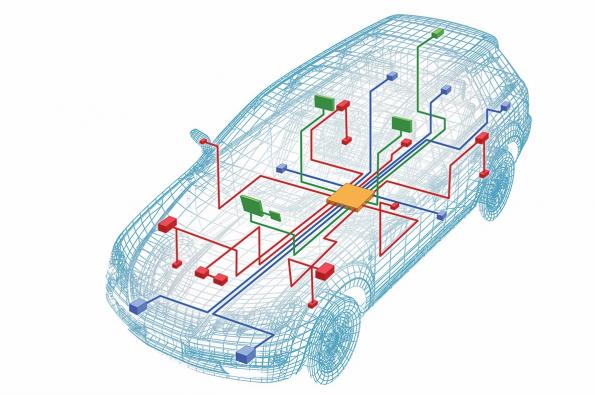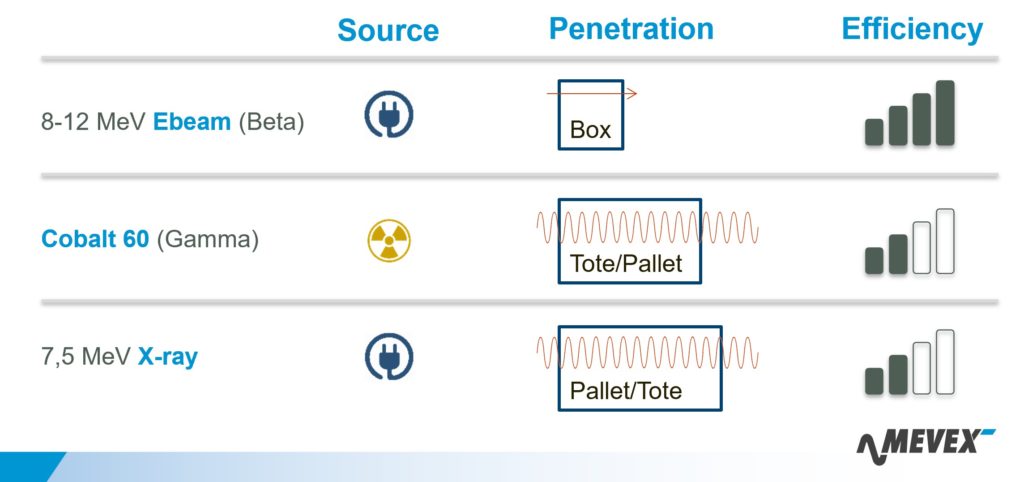Applications

Electron beam and X-ray are used to sterilize or improve product properties in many different industrial applications. The product properties and its packaging usually dictate weather e-beam or X-ray is best suited.
Most common applications for electron beam and X-ray industrial processing
Industrial Sterilization of Single use Medical Devices
A very diverse range of medical devices are sterilized using e-beam such as wound care, products, bandages, petri dishes, drapes, catheters, gloves and masks.
The high-energy electrons from the accelerator, typically 10 MeV beta sterilization, disrupt target living cells by damaging the DNA and other cellular structures.

Food phytosanitary treatment
E-beam and X-ray have the same benefits on food as when it is heated, refrigerated, frozen or treated with chemicals. The advantage of food radiation compared with other techniques is that temperature does not change and there are no chemical residuals.
Food irradiation controls spoilage and food-borne pathogenic micro-organisms or insect pests without significantly affecting taste or smell.
X-ray food irradiation is limited by regulations to 5 MeV in most countries.

Gem Treatment coloration
Gemstones are sometimes exposed to radiation, typically 25 MeV e-beam, to enhance or change their color.
Topaz is the most radiation treated stone. Orange natural stones become blue after exposure to radiation.

Polymer crosslinking
Electron beam crosslinking of the wire insulation is one of the most well-established industrial uses of Electron beam processing. E-beam crosslinking of cable insulation improves the polymer properties. A typical application is automotive wires which require increased resistance to temperature.
Other historical crosslinking applications are heat-shrink tubing and tire crosslinking.
Polymer crosslinking is usually done with accelerators below 3 MeV of beam energy.

E-beam and X-ray penetration properties

10 MeV E-beam has limited penetration in product because electrons have mass as opposed to photon energy radiation of gamma and X-rays.
X-ray’s lower efficiency compared with e-beam is due to the power lost in the X-ray target during the conversion from e-beam to X-ray.
